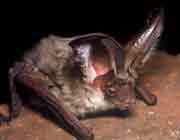Water has always played a key role in the long history of IRAN. Iranians are credited for qanats and the invention of Persian wheel, two ancient irrigation systems which are well known in the world. According to hereto the Greek historian, Qanat digging technique was documented and was practiced in the achaemenids era (550_330 BC) 2500 years ago. Remains of reservoirs have been discovered along with water intakes, spilwaysand outlets and the sewage systems belonging to pre_achamenids and Assyrians (1500-600 BC).
The archaeological surveys suggest that Iranians enjoyed advanced culture and civilization some 7000 years ago. The civilization of in the western part of Iranian plateau flourished 5000 years ago and they invented cuneiform writing . Discoveries prove that Iranian were peaceful and ingenious people in third millennium BC who cultivated cultivated land and raised crops and livestock.
Khaju bridge & diversion dam, Isfahan province, Age 354 years
In general , there have been four methods of in irrigation in Iran .
These four methods are listed as cisterns or water reservoirs, channels, canals, weirs and dams. Conventional wells were drilled vertically by means of manual tools and equipment's and the water content of these wells was discharged for utilization by men or through the use of herbivorous animals . Ancient Iranian perceived the process by which artesian well originated knew how they could be brought under subjugation.
However full utilization of the aforementioned well was not accomplished in the past, Furthermore excess precipitation was stored in certain locations known as cistern or water reservoirs, in the form of covered structured ,filled with water ,can be observed in vicinity of salt desert , and hot arid plains in south of Iran which are utilized for provision of water demands of villages and caravans.
Bahman weir dam, Fars province, Age 2000 years
Dam construction in Iran dates back to sassanian era, at the time of king shapur I. The dams made at that period are 1300 –1700 years old. A regulating dam and a bridge diversion dam(500 meters long with 4 spans) in shushtar are among these dams.
Amir dam constructed by buyids dynasty 35 km north of shiraz is 1000 years old. this three-purpose dam (irrigation ,bridge and mill) still exist and functions. During the safavids empire (1501-1736) water engineering developed significantly and many storage and diversion dams and bridges were constructed in Esfahan and Mashad of which some still exist.
Fariman weir dam, Khorasan province, Age 400 years
General characteristics of old dams in Iran:
As proved by the recent studies , Iranian carefully considered the three basic factors i.e. site selection , foundation condition and construction materials . In all cases they fully observed all design and technical requirements and circumstances in the dam site and site selection. Topography, river regime, material availability and river diversion during construction were also profoundly attended to. Types of Ancient Dams:
All Iranian ancient dams are considered of following masonry types. Gravity dams:
Studies indicates that all the design criteria considered in the recent design of gravity dams were taken into the consideration in the design of Iranian ancient dams. saveh and sheshtaraz dams which are over 700 and 900 years respectively are examples of this type. Arch dams:
Iranian perceived the high bearing of arches before Romans . Kebar and Kerrit dams over 700 and 400 years old respectively are both arch dams. Buttress dams:
Akhlemad dam with a crest length of 230m , height of 12 m and reservoir capacity of 3 million cubic meters and Fariman dam, 400 years old , are both buttress dams. Both dams are still under operation.
Golestan weir dam, Khorasan province, Age 300 years
Amir dam, Fars province, Age 1000 years
The under ground water channels , the so called "Qanat" was by the large the most important method Of irrigation in many parts of Iran.
In view of the scarcity of rivers in many regions of the country and With consideration that the number of perpetual rivers was highly scanty the ancient Iranian chivied an admirable innovation known as "QANAT" or "CAREEZ" approximately 3000 years ago.
This highly important and incomparable initiative was transferred from middle east later transferred From middle east to north Africa , Spain and Cecil for further exploitation. The records on the Iranian's "QANAT" in the achaemenian period can be found in the writings of Greek historian . Consequently , it can be asserted that this irrigation technique dates back to the prechaemenian period . There also exist historians records in Qanat in the parthians and sassanids.
Qanat (3000 year ancientness)
A symbol of Iranian Identity and National skill in Irrigation
Name : Fahraj Qanat (Subterranean Canal)
Length(km) : 20
Depth(m) : 50
Location: Yazd Province
Copyright © 1994-2000 IRCOLD. All rights reserved.
.jpg)


















